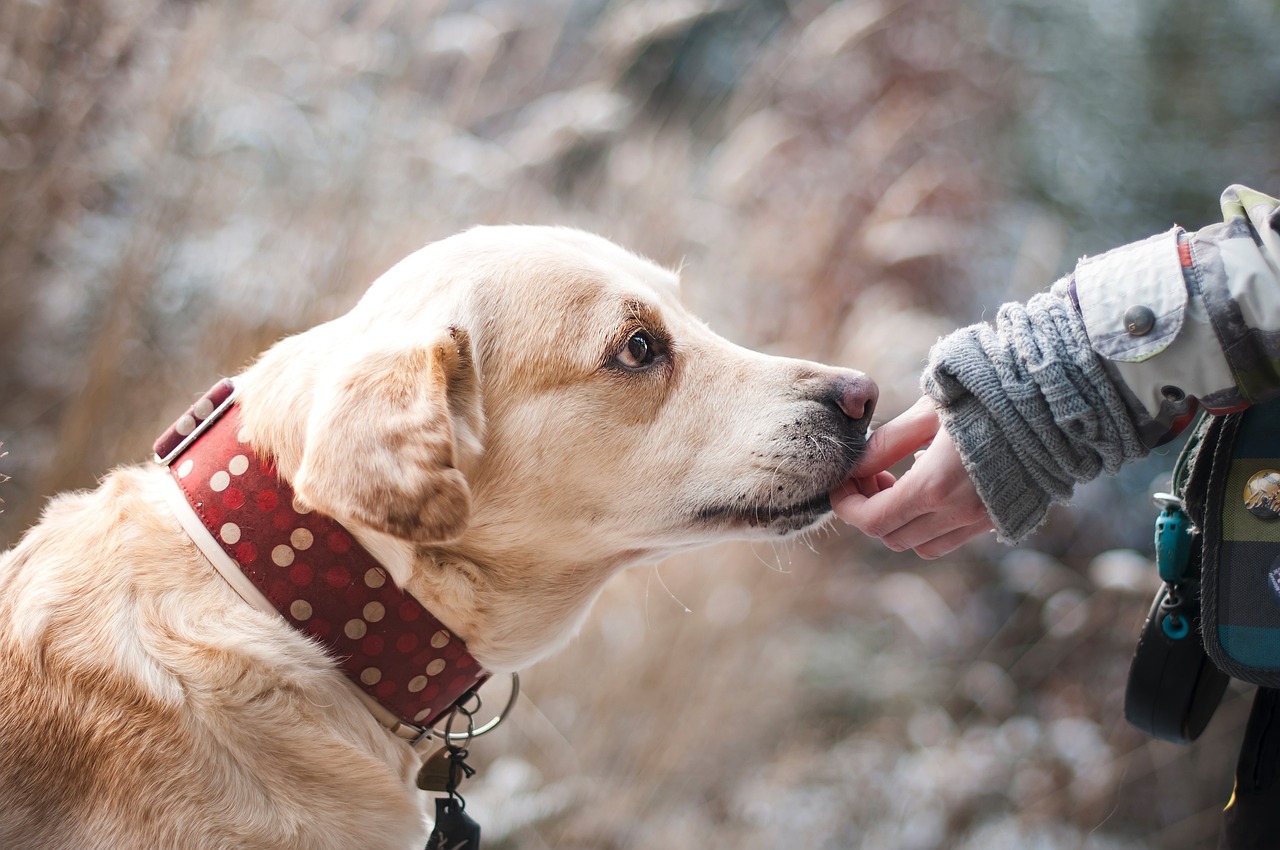Tips for Helping Your Dog With Food Sensitivities
As pet owners, we all want the best for our furry friends. If you've noticed your dog scratching more than usual or having some digestive issues, it might be time to consider the possibility of food sensitivities. Just like humans, dogs can have reactions to certain foods that can lead to discomfort and health problems. This article provides essential tips and strategies for pet owners to effectively manage and alleviate food sensitivities in their dogs, ensuring a healthier and happier life for their furry companions. Understanding the nuances of your dog’s diet can feel overwhelming, but with the right approach, you can help them thrive.
Food sensitivities can manifest in various ways, including digestive issues and skin problems. Recognizing these signs early can help in managing your dog's health effectively. It’s important to differentiate between a food allergy, which is an immune response, and a food sensitivity, which typically involves the gastrointestinal tract. Both can lead to discomfort, but the symptoms and underlying causes can differ. By being observant and proactive, you can make a significant difference in your dog's quality of life.
Identifying the symptoms of food sensitivities is crucial for timely intervention. Common signs include itching, gastrointestinal upset, and unusual behavior, which can indicate underlying dietary issues. Think of it like a puzzle; each symptom is a piece that helps you figure out what’s going on with your dog. The sooner you recognize these signs, the sooner you can take action to improve their health.
Gastrointestinal symptoms can range from diarrhea to vomiting. Understanding these signs can help you pinpoint potential food sensitivities and take appropriate action. If your dog is experiencing frequent gastrointestinal upset, it’s like their body is sending you a distress signal. Monitoring their eating habits and stool can provide valuable insights into their dietary needs.
Frequent diarrhea and vomiting are often the first signs of food sensitivities. It’s essential to keep an eye on your dog’s stool consistency and frequency. If you notice changes, don’t brush it off; this could be your dog’s way of communicating that something isn’t right. Keeping a record of these incidents can be helpful when discussing your dog’s health with your veterinarian.
Bloating and excessive gas can also indicate food sensitivities. Recognizing these symptoms can help you adjust your dog's diet to prevent discomfort. Imagine how uncomfortable it is for us to feel bloated; now think about how your dog must feel! If your dog seems restless or is constantly trying to find a comfortable position, it might be time to reevaluate their food.
Skin reactions such as itching and rashes can be a clear indicator of food sensitivities. Observing your dog's skin condition can guide dietary changes. If your dog is scratching, biting, or licking at their skin, it could be a sign that their food is not agreeing with them. Pay attention to any changes in their coat or skin; these can be crucial indicators of underlying dietary issues.
Determining which foods trigger your dog's sensitivities is essential for effective management. Keeping a detailed food diary can help in identifying these problematic ingredients. Documenting what your dog eats, along with any symptoms they exhibit, can help you and your veterinarian pinpoint which foods to avoid. It’s a bit like detective work, and the more information you gather, the clearer the picture will become.
An elimination diet is a systematic approach to identify food sensitivities by removing potential allergens from your dog's diet and gradually reintroducing them. This method can be a game changer! By eliminating common allergens and then slowly reintroducing them one at a time, you can see which foods might be causing problems. It requires patience but can lead to significant improvements in your dog’s health.
Always consult with a veterinarian before making significant dietary changes. They can provide professional advice and help create a tailored plan for your dog's needs. Your vet can guide you through the process of identifying food sensitivities and suggest safe options that ensure your dog gets the nutrition they need without the unwanted side effects.
Selecting appropriate dog food is vital for managing food sensitivities. Look for high-quality, limited-ingredient diets that cater to your dog's specific needs. It’s important to choose food that is not only safe but also nutritious. A well-balanced diet can help your dog feel their best and reduce the likelihood of adverse reactions.
Understanding food labels can help you avoid potential allergens. Pay attention to ingredient lists to ensure your dog is not consuming harmful substances. Just like we read labels to avoid unhealthy ingredients, your dog deserves the same level of care. Look for foods that list a single source of protein and avoid fillers and artificial additives.
Hypoallergenic dog food can be beneficial for dogs with food sensitivities. These formulas are designed to minimize allergic reactions while providing balanced nutrition. Think of hypoallergenic food as a safety net for your dog’s diet, allowing them to enjoy their meals without the risk of discomfort.
Regularly monitoring your dog's health and behavior is crucial for managing food sensitivities. Keep track of any changes and consult with your veterinarian as needed. Just like you would keep an eye on your child's health, your dog deserves the same attention. If you notice any new symptoms or changes in behavior, don’t hesitate to reach out to your vet.
Maintaining a health journal for your dog can help track symptoms and dietary changes, making it easier to identify patterns and triggers. Documenting everything can feel tedious, but it’s worth it when it comes to your dog’s health. You’ll be able to spot trends that might not be obvious at first glance.
Regular veterinary check-ups are essential for ensuring your dog's ongoing health. Your vet can provide guidance on managing food sensitivities and recommend appropriate treatments. Think of these visits as a wellness check for your furry friend; they help you stay ahead of any potential issues.
Q: How can I tell if my dog has food sensitivities?
A: Look for symptoms like itching, diarrhea, vomiting, and unusual behavior. Keeping a food diary can help you identify patterns.
Q: Can I change my dog's diet without consulting a vet?
A: It’s best to consult with a veterinarian before making significant changes to ensure your dog’s health and safety.
Q: What type of food should I feed my dog with food sensitivities?
A: Look for high-quality, limited-ingredient, or hypoallergenic dog food that is specifically designed for dogs with food sensitivities.

Understanding Food Sensitivities in Dogs
Food sensitivities in dogs can be a puzzling issue for pet owners. It's essential to understand that these sensitivities can manifest in various ways, leading to discomfort for your furry friend. Just like humans, dogs can have adverse reactions to certain foods, which can result in a range of symptoms. Recognizing these signs early on can make a significant difference in managing your dog's health effectively.
Food sensitivities are often confused with food allergies, but they are not the same. While allergies involve the immune system and can lead to severe reactions, sensitivities typically result in gastrointestinal issues and skin problems without the immune response. This distinction is crucial for pet owners to grasp, as it helps in determining the appropriate course of action. If your dog is experiencing discomfort, it’s worth considering whether their diet could be the culprit.
Some common signs of food sensitivities in dogs include:
- Digestive Issues: This can range from mild to severe and may include symptoms like diarrhea, vomiting, and bloating.
- Skin Problems: If your dog is scratching excessively or developing rashes, it could indicate a food sensitivity.
- Behavioral Changes: Sometimes, discomfort can lead to changes in behavior, such as increased irritability or lethargy.
Understanding these sensitivities is crucial for creating a happier and healthier life for your dog. You may find that certain ingredients, such as grains, dairy, or specific proteins, are more likely to cause issues. It's like trying to find the right puzzle piece that fits perfectly; once you identify the offending ingredients, you can tailor your dog's diet to avoid them.
To effectively manage food sensitivities, it’s essential to keep a keen eye on your dog's reactions to different foods. This means observing their behavior, monitoring their digestive health, and even keeping a food diary. By tracking what your dog eats and any subsequent symptoms, you can begin to identify patterns that may point to specific trigger foods. This proactive approach can lead to a more comfortable and enjoyable life for your furry companion.
In summary, understanding food sensitivities in dogs is a vital aspect of pet ownership. By being observant and informed, you can help your dog avoid discomfort and improve their overall quality of life. Remember, every dog is unique, and what works for one may not work for another. So, stay attentive and be ready to adapt your approach as needed.

Common Symptoms of Food Sensitivities
Identifying the symptoms of food sensitivities in dogs is crucial for timely intervention. Just like humans, our furry friends can experience various reactions to certain foods, which can lead to discomfort and health issues. The signs may not always be obvious, so it's essential to be vigilant and observant. Common symptoms include itching, gastrointestinal upset, and unusual behavior. If your dog seems more restless than usual or is scratching at their skin incessantly, it might be time to investigate their diet.
One of the most telling signs of food sensitivities is gastrointestinal issues. These can manifest as:
- Diarrhea: Frequent loose stools can indicate that your dog is having trouble digesting certain ingredients.
- Vomiting: If your dog is regurgitating their food or throwing up frequently after meals, it could be a sign of a sensitivity.
- Bloating: A distended abdomen can be uncomfortable for your dog and may signal food intolerances.
- Gas: Excessive flatulence can be a red flag that your dog’s digestive system is struggling.
Additionally, skin reactions are another common symptom of food sensitivities. If you notice your dog constantly scratching or licking their paws, this could be a result of dietary issues. Skin conditions such as rashes, redness, or hot spots can also arise from food sensitivities. Observing your dog's skin condition can guide dietary changes and help you pinpoint what might be causing these reactions.
It's important to note that not all symptoms are directly related to food. Sometimes, behavioral changes can also indicate discomfort caused by dietary issues. If your dog seems more anxious, lethargic, or irritable than usual, it could be worth considering their diet as a potential culprit. Monitoring these symptoms closely can help you make informed decisions about your dog's health and well-being.
In summary, recognizing the common symptoms of food sensitivities is the first step toward ensuring your dog leads a healthier, happier life. By being proactive and observant, you can help your furry companion avoid the discomfort associated with food sensitivities.
Q: How can I tell if my dog has a food sensitivity?
A: Look for symptoms like itching, gastrointestinal upset, and unusual behavior. Keep an eye on any changes in their health after introducing new foods.
Q: Should I consult a vet if I suspect food sensitivities?
A: Yes, it's always best to consult with a veterinarian for professional advice and to rule out other health issues.
Q: Can I try an elimination diet at home?
A: While you can start an elimination diet at home, it’s recommended to do so under veterinary supervision to ensure your dog’s nutritional needs are met.
Q: Are there specific dog foods designed for food sensitivities?
A: Yes, many brands offer hypoallergenic or limited-ingredient diets specifically formulated for dogs with food sensitivities.
Gastrointestinal Issues
Gastrointestinal issues in dogs can be a real source of concern for pet owners, and understanding these symptoms is crucial for pinpointing potential food sensitivities. When your furry friend experiences tummy troubles, it can manifest in various ways, from simple discomfort to more severe health problems. Imagine your dog as a little detective, trying to communicate that something isn't right in their digestive system. You might notice them acting restless, whining, or even avoiding their food altogether. These behaviors can serve as vital clues pointing to underlying dietary issues.
One of the most common signs of gastrointestinal upset is diarrhea. If your dog is running to the yard more frequently than usual or if you notice a sudden change in their stool consistency, it’s time to pay attention. Diarrhea can be caused by several factors, but when it’s persistent, it often indicates that your dog is reacting negatively to something in their diet. Alongside diarrhea, vomiting can also occur, and these two symptoms together can be alarming. It’s like your dog's stomach is sending out an SOS signal, and it’s up to you to decode it.
Another symptom to watch for is bloating. If your dog’s belly feels distended or they seem uncomfortable after eating, this could be a sign of food sensitivity. Bloating can lead to excessive gas, which might not only be uncomfortable for your dog but can also be quite unpleasant for you! Recognizing these signs early can help you make the necessary adjustments to your dog's diet, ensuring they remain happy and healthy.
In summary, gastrointestinal issues can be a significant indicator of food sensitivities in dogs. By being vigilant about your dog’s eating habits and observing their behavior, you can gather important information that may help you identify problem foods. If you notice any of the symptoms mentioned above, it’s essential to take action promptly, as your dog’s comfort and well-being depend on it.
- What should I do if my dog has diarrhea? If your dog has diarrhea, monitor their condition closely. Ensure they stay hydrated, and consider consulting your veterinarian if the diarrhea persists for more than a day.
- Can food sensitivities develop suddenly in dogs? Yes, food sensitivities can develop at any age. A dog that has eaten the same diet for years may suddenly become sensitive to a specific ingredient.
- How can I help my dog with gastrointestinal issues? Start by keeping a food diary, consult your veterinarian for dietary recommendations, and consider an elimination diet to identify trigger foods.
Diarrhea and Vomiting
When it comes to our furry friends, can be alarming signs that something isn't quite right. These symptoms often serve as the body's way of signaling that a food sensitivity may be at play. Imagine your dog’s stomach as a sensitive orchestra; when one instrument goes out of tune, the whole performance suffers. In this case, the food they consume can be the culprit, leading to a cascade of gastrointestinal distress.
Frequent episodes of diarrhea can leave your dog feeling lethargic and uncomfortable. It’s essential to monitor not just the frequency, but also the consistency of their stools. A sudden change in your dog's bowel movements can indicate a reaction to something they’ve eaten. If you notice your dog having watery stools, it might be time to consider what’s on their menu. On the other hand, vomiting can also accompany these gastrointestinal issues, creating a double whammy that can lead to dehydration and further complications.
To better understand the implications of these symptoms, here’s a quick breakdown of potential causes:
| Cause | Description |
|---|---|
| Food Sensitivity | A reaction to specific ingredients in food, often leading to inflammation in the gut. |
| Infection | Bacterial or viral infections can cause sudden vomiting and diarrhea. |
| Dietary Changes | Switching dog food too quickly can upset their stomach. |
| Parasites | Worms or other parasites can lead to gastrointestinal upset. |
As a pet owner, it’s crucial to keep an eye on your dog’s eating habits and any environmental changes that could affect their diet. Have you recently changed their food brand or introduced new treats? These factors can play a significant role in gastrointestinal health. If your dog’s vomiting or diarrhea persists for more than 24 hours, it’s time to consult your veterinarian. They can provide guidance on whether a dietary adjustment or further testing is necessary. Remember, your dog relies on you to be their voice, so don’t hesitate to seek help when needed!
- What should I do if my dog has diarrhea and vomiting? - Monitor their symptoms closely, ensure they stay hydrated, and consult your veterinarian if the symptoms persist.
- Can I give my dog over-the-counter medications? - It's best to consult your veterinarian before administering any medication to ensure it's safe for your dog.
- How can I prevent food sensitivities in my dog? - Gradually introduce new foods and stick to high-quality, limited-ingredient diets to minimize the risk of sensitivities.
Bloating and Gas
This article provides essential tips and strategies for pet owners to effectively manage and alleviate food sensitivities in their dogs, ensuring a healthier and happier life for their furry companions.
Food sensitivities can manifest in various ways, including digestive issues and skin problems. Recognizing these signs early can help in managing your dog's health effectively.
Identifying the symptoms of food sensitivities is crucial for timely intervention. Common signs include itching, gastrointestinal upset, and unusual behavior, which can indicate underlying dietary issues.
Gastrointestinal symptoms can range from diarrhea to vomiting. Understanding these signs can help you pinpoint potential food sensitivities and take appropriate action.
Frequent diarrhea and vomiting are often the first signs of food sensitivities. Monitoring your dog's stool and eating habits can provide valuable insights into their dietary needs.
Bloating and excessive gas can be uncomfortable for your dog, causing them to feel restless and irritable. These symptoms often arise when your dog consumes foods that are difficult to digest or that contain ingredients they're sensitive to. Imagine your dog’s stomach as a balloon; when it fills with air and food that it can't handle, it can lead to discomfort and pain. This can manifest in various ways, including:
- Swollen Abdomen: A visibly distended belly can indicate that your dog is experiencing bloating.
- Frequent Burping: If your dog is burping more than usual, it could be a sign of gas buildup.
- Restlessness: Dogs may pace or seem unable to get comfortable when they are experiencing gastrointestinal distress.
To help alleviate these symptoms, consider making gradual changes to your dog's diet. Start by introducing new foods slowly, allowing their system to adjust. Additionally, avoid feeding your dog table scraps or foods high in fat, as these can exacerbate bloating and gas. If your dog frequently suffers from these issues, it may be time to consult your veterinarian for tailored dietary advice.
Skin reactions such as itching and rashes can be a clear indicator of food sensitivities. Observing your dog's skin condition can guide dietary changes.
Determining which foods trigger your dog's sensitivities is essential for effective management. Keeping a detailed food diary can help in identifying these problematic ingredients.
An elimination diet is a systematic approach to identify food sensitivities by removing potential allergens from your dog's diet and gradually reintroducing them.
Always consult with a veterinarian before making significant dietary changes. They can provide professional advice and help create a tailored plan for your dog's needs.
Selecting appropriate dog food is vital for managing food sensitivities. Look for high-quality, limited-ingredient diets that cater to your dog's specific needs.
Understanding food labels can help you avoid potential allergens. Pay attention to ingredient lists to ensure your dog is not consuming harmful substances.
Hypoallergenic dog food can be beneficial for dogs with food sensitivities. These formulas are designed to minimize allergic reactions while providing balanced nutrition.
Regularly monitoring your dog's health and behavior is crucial for managing food sensitivities. Keep track of any changes and consult with your veterinarian as needed.
Maintaining a health journal for your dog can help track symptoms and dietary changes, making it easier to identify patterns and triggers.
Regular veterinary check-ups are essential for ensuring your dog's ongoing health. Your vet can provide guidance on managing food sensitivities and recommend appropriate treatments.
Q: What are the most common food sensitivities in dogs?
A: Common food sensitivities in dogs include proteins like beef, chicken, and dairy, as well as grains like wheat and corn.
Q: How can I tell if my dog has a food sensitivity?
A: Look for symptoms like itching, gastrointestinal issues, and changes in behavior or energy levels.
Q: Is it safe to try an elimination diet at home?
A: Yes, but it’s best to consult your veterinarian to ensure it’s done safely and effectively.
Q: Can food sensitivities develop suddenly in dogs?
A: Yes, food sensitivities can develop at any age, even if your dog has eaten the same food for years.
Skin Reactions
When it comes to our furry friends, can be one of the most visible signs of food sensitivities. Imagine your dog, usually so lively and playful, suddenly scratching incessantly or developing red, inflamed patches on their skin. It’s disheartening, isn’t it? These symptoms can range from mild itching to severe rashes, and they often indicate that something in your dog's diet just isn’t sitting right with them. As a responsible pet owner, it’s crucial to pay close attention to these changes, as they can be your first clue in identifying food sensitivities.
Common skin reactions include itching, redness, and rashes. When your dog starts to show signs of discomfort, it’s essential to act swiftly. One way to gauge the severity of the reaction is to observe how your dog behaves. Are they constantly pawing at their face? Is their skin flaking or becoming overly oily? These signs can help you determine if the issue is merely a minor annoyance or something that requires immediate veterinary attention.
But what causes these skin reactions? Often, it’s a particular ingredient in their food that triggers an allergic response. Ingredients like beef, dairy, chicken, and even grains can be potential culprits. To better understand how food sensitivities affect your dog’s skin, consider keeping a food diary. This diary can help you track what your dog eats and any subsequent skin reactions they experience. By identifying patterns, you can pinpoint the offending ingredient and make necessary dietary adjustments.
In some cases, skin reactions can also lead to secondary infections, as the constant scratching can break the skin barrier. This can create an entry point for bacteria and yeast, resulting in even more discomfort for your dog. Therefore, it’s essential to monitor these symptoms closely and consult with your veterinarian if you notice persistent issues. They can recommend appropriate treatments, which may include topical medications, antihistamines, or even a change in diet.
Addressing skin reactions due to food sensitivities is not just about alleviating discomfort; it's about enhancing your dog's overall quality of life. A happy dog is a healthy dog, and understanding their dietary needs is a key part of that equation. So, when you notice your pup scratching or developing unusual rashes, remember, it’s a call to action. Your dog relies on you to be their advocate, ensuring they receive the right nutrition for their unique needs.
- What are the most common food sensitivities in dogs?
Common food sensitivities in dogs include beef, chicken, dairy, and grains. - How can I tell if my dog has a food sensitivity?
Look for symptoms such as itching, gastrointestinal upset, or unusual behavior after eating. - Is an elimination diet safe for my dog?
Yes, an elimination diet is a systematic way to identify food sensitivities, but it’s best done under a veterinarian's guidance. - Can food sensitivities change over time?
Yes, dogs can develop new sensitivities as they age, so it’s essential to monitor their reactions to food regularly.

Identifying Trigger Foods
Identifying trigger foods is a crucial step in managing your dog's food sensitivities. Just like humans, dogs can have specific ingredients that don’t sit well with their stomachs or skin. The first step in this journey is to keep a detailed food diary. This diary should include everything your dog eats, from their main meals to any treats or snacks. By documenting this information, you can start to notice patterns and pinpoint which foods may be causing issues.
When observing your dog for potential food sensitivities, look for any changes in behavior or health after introducing new foods. For instance, if you notice your dog starts scratching excessively or has an upset stomach after trying a new brand of kibble or a specific treat, this could be a sign of a trigger food. It’s essential to be vigilant and attentive to these changes, as they can provide valuable insights into your dog’s dietary needs.
Another effective method for identifying trigger foods is through the implementation of an elimination diet. This process involves removing all potential allergens from your dog’s diet for a period of time, usually around 8 to 12 weeks. During this time, you will feed your dog a limited-ingredient diet that consists of novel proteins and carbohydrates that they have not previously consumed. After the elimination phase, you can gradually reintroduce one food at a time, allowing you to monitor for any adverse reactions. This systematic approach can help you accurately identify the foods that may be causing sensitivities.
However, it’s important to note that this method should be conducted under the guidance of a veterinarian. Your vet can help you create a tailored plan that ensures your dog receives balanced nutrition while you work to identify their trigger foods. After all, a well-structured approach is key to ensuring your dog remains healthy and happy throughout the process.
In addition to monitoring behavior, you can also consider using a food sensitivity test. Some veterinarians offer tests that analyze your dog's blood or saliva to identify potential food sensitivities. While these tests can provide insights, they should be used in conjunction with dietary changes and not as a standalone solution.
Ultimately, identifying trigger foods is a journey that requires patience and observation. By being proactive and attentive to your dog's reactions, you can help them lead a more comfortable and enjoyable life free from the discomfort of food sensitivities.
- What are common trigger foods for dogs?
Common trigger foods include beef, dairy, wheat, chicken, and eggs. However, every dog is different, so it's essential to identify what specifically affects your pet.
- How long does it take to identify trigger foods?
Identifying trigger foods can take several weeks to months, especially if you are conducting an elimination diet. Patience is key!
- Can I do an elimination diet on my own?
While you can start an elimination diet on your own, it's highly recommended to consult with a veterinarian to ensure your dog’s nutritional needs are met.
- What should I do if I suspect my dog has food sensitivities?
If you suspect food sensitivities, start by keeping a food diary and monitoring your dog's symptoms. Consulting with a veterinarian is also a crucial step.
Elimination Diets
This article provides essential tips and strategies for pet owners to effectively manage and alleviate food sensitivities in their dogs, ensuring a healthier and happier life for their furry companions.
Food sensitivities can manifest in various ways, including digestive issues and skin problems. Recognizing these signs early can help in managing your dog's health effectively.
Identifying the symptoms of food sensitivities is crucial for timely intervention. Common signs include itching, gastrointestinal upset, and unusual behavior, which can indicate underlying dietary issues.
Gastrointestinal symptoms can range from diarrhea to vomiting. Understanding these signs can help you pinpoint potential food sensitivities and take appropriate action.
Frequent diarrhea and vomiting are often the first signs of food sensitivities. Monitoring your dog's stool and eating habits can provide valuable insights into their dietary needs.
Bloating and excessive gas can also indicate food sensitivities. Recognizing these symptoms can help you adjust your dog's diet to prevent discomfort.
Skin reactions such as itching and rashes can be a clear indicator of food sensitivities. Observing your dog's skin condition can guide dietary changes.
Determining which foods trigger your dog's sensitivities is essential for effective management. Keeping a detailed food diary can help in identifying these problematic ingredients.
An elimination diet is a systematic approach designed to identify food sensitivities by removing potential allergens from your dog's diet and gradually reintroducing them. This method is akin to peeling back the layers of an onion; you remove what could be causing the irritation and slowly add back items to see which ones provoke a reaction. The process typically begins with a limited-ingredient diet, which includes a single protein source and a single carbohydrate source that your dog has never consumed before. This way, you can minimize the chances of triggering any existing sensitivities.
During the elimination phase, which usually lasts about 8-12 weeks, it's crucial to avoid all treats, table scraps, and flavored medications, as these can introduce hidden allergens. Keep a close eye on your dog's symptoms during this period. If you notice improvement, you can begin the reintroduction phase.
In the reintroduction phase, you will add one new food item back into your dog's diet every 3-5 days. This gradual approach allows you to observe any reactions your dog may have to each specific food. If your dog shows signs of discomfort, such as itching or gastrointestinal upset, you can pinpoint the culprit. Here’s a quick overview of how the elimination diet process works:
| Phase | Duration | Description |
|---|---|---|
| Elimination | 8-12 weeks | Feed a limited-ingredient diet with a novel protein and carbohydrate. |
| Reintroduction | 3-5 days per food | Add one food item at a time to identify triggers. |
Always consult with your veterinarian before starting an elimination diet. They can provide guidance tailored to your dog's specific needs, ensuring that the process is both safe and effective. Remember, patience is key! The ultimate goal is to find a diet that keeps your furry friend happy and healthy.
Selecting appropriate dog food is vital for managing food sensitivities. Look for high-quality, limited-ingredient diets that cater to your dog's specific needs.
Understanding food labels can help you avoid potential allergens. Pay attention to ingredient lists to ensure your dog is not consuming harmful substances.
Hypoallergenic dog food can be beneficial for dogs with food sensitivities. These formulas are designed to minimize allergic reactions while providing balanced nutrition.
Regularly monitoring your dog's health and behavior is crucial for managing food sensitivities. Keep track of any changes and consult with your veterinarian as needed.
Maintaining a health journal for your dog can help track symptoms and dietary changes, making it easier to identify patterns and triggers.
Regular veterinary check-ups are essential for ensuring your dog's ongoing health. Your vet can provide guidance on managing food sensitivities and recommend appropriate treatments.
- What are the most common food sensitivities in dogs? Common sensitivities include beef, dairy, wheat, and chicken.
- How long does it take to see results from an elimination diet? It typically takes 8-12 weeks to see significant improvements.
- Can I use homemade dog food during an elimination diet? Yes, but ensure it meets nutritional needs and avoids known allergens.
Consulting with a Veterinarian
When it comes to managing your dog's food sensitivities, is not just a good idea—it's essential. Your vet is like a trusted guide on this journey, equipped with the knowledge and experience to help you navigate the often confusing world of pet nutrition. You might be wondering, "Why can't I just figure this out on my own?" Well, while some pet owners may have success with trial and error, a veterinarian can offer insights that save you time, money, and stress in the long run.
During your visit, be prepared to discuss your dog's symptoms in detail. It’s helpful to keep a record of any reactions you've noticed—like those pesky itchy spots or the occasional upset stomach. By providing your vet with a comprehensive overview of your dog's health history, you can help them make a more accurate assessment. Think of it as piecing together a puzzle. The more pieces you provide, the clearer the picture becomes.
In some cases, your veterinarian might recommend specific tests to identify food allergies or sensitivities. These tests can include blood work or skin tests, which can help pinpoint the exact allergens affecting your furry friend. While this may sound daunting, remember that these tests are designed to help your dog feel better. Understanding the root cause of their discomfort can lead to a more effective treatment plan.
Additionally, your veterinarian can assist you in creating a tailored dietary plan. This plan will consider your dog's unique needs, age, weight, and any underlying health issues. They can also guide you on how to implement an elimination diet safely, ensuring that your dog still receives balanced nutrition while you figure out what foods are causing trouble.
Finally, don't hesitate to ask your veterinarian any questions you may have. Whether it's about specific ingredients, potential supplements, or how to monitor your dog's progress, your vet is there to help. Open communication is key to ensuring your dog leads a happy, healthy life.
- How can I tell if my dog has food sensitivities? Look for signs such as itching, gastrointestinal upset, or unusual behavior.
- What should I do if I suspect my dog has food sensitivities? Consult with your veterinarian for a proper diagnosis and tailored dietary recommendations.
- Can I change my dog's diet on my own? While you can make minor changes, it's best to consult your vet before making significant dietary shifts.
- What are hypoallergenic dog foods? These are specially formulated diets designed to minimize allergic reactions while providing balanced nutrition.
- How often should I take my dog to the vet? Regular check-ups, at least once a year, are recommended to monitor your dog's health and dietary needs.

Choosing the Right Dog Food
When it comes to managing food sensitivities in your dog, selecting the right dog food is absolutely crucial. Just like we need to be mindful of what we eat, our furry friends deserve the same level of care when it comes to their diet. Imagine trying to navigate a maze blindfolded; that's what it can feel like for a pet owner trying to choose the right food without understanding their dog's specific needs. So, how do you ensure you're picking the best option? Let’s dive into some essential tips!
First and foremost, look for high-quality, limited-ingredient diets. These foods are specifically formulated to minimize the risk of allergic reactions while providing balanced nutrition. A limited ingredient diet typically contains fewer components, making it easier to identify potential allergens. Think of it as decluttering your dog's plate—less is often more! When you’re shopping for dog food, check the ingredient list carefully. Ingredients are listed in order of quantity, so the first few items are the most prominent. Choose brands that prioritize real meat as the first ingredient, and avoid foods with fillers like corn or soy, which can be common allergens.
Another important aspect is to consider hypoallergenic options. These specially formulated dog foods are designed to reduce the chances of allergic reactions. They often use novel protein sources, such as duck or venison, which your dog may not have been exposed to before. By introducing these unique proteins into your dog’s diet, you can potentially avoid triggering any sensitivities. Additionally, hypoallergenic foods typically contain fewer additives and preservatives, making them a healthier choice overall.
It’s also essential to keep your dog’s specific dietary needs in mind. For example, if your dog is sensitive to grains, you might want to explore grain-free options. However, be cautious; grain-free does not automatically mean better. Some grain-free diets can be high in potatoes or peas, which can also cause sensitivities in some dogs. Always do your research and consult with your veterinarian to determine the best food for your furry friend.
Lastly, make sure to transition any new food gradually. Sudden changes in diet can lead to gastrointestinal upset, which is the last thing you want while trying to manage food sensitivities. A good rule of thumb is to mix the new food with the old food over several days, gradually increasing the proportion of the new food. This way, your dog’s digestive system can adjust smoothly, reducing the risk of any adverse reactions.
In summary, choosing the right dog food is a multifaceted process that requires careful consideration and a bit of detective work. By focusing on high-quality, limited-ingredient diets, exploring hypoallergenic options, and being mindful of your dog’s unique needs, you can set the stage for a healthier, happier pup. Remember, the right food can make all the difference in managing food sensitivities and ensuring your dog thrives!
- What are the signs that my dog has food sensitivities? Look for symptoms such as itching, gastrointestinal upset, and unusual behavior.
- How long does it take to see improvements after changing my dog's diet? Typically, you may notice changes within a few weeks, but it can vary depending on the individual dog.
- Is grain-free dog food better for dogs with food sensitivities? Not necessarily. It's important to identify specific allergens and consult with your vet.
- Can I make homemade dog food for my pet? Yes, but it's crucial to ensure that the homemade diet is nutritionally balanced and suitable for your dog's needs.
Reading Labels Carefully
When it comes to managing your dog's food sensitivities, is not just a suggestion—it's a necessity! The ingredients in your dog's food can make all the difference between a happy, healthy pup and one who's constantly uncomfortable. So, what should you be looking for when you pick up that bag of kibble or can of wet food? Let's break it down.
First off, always start with the ingredient list. Ingredients are listed in order by weight, so the first few items are the most significant. If you see a common allergen—like beef, chicken, wheat, or soy—listed among the first few ingredients, you might want to think twice. For dogs with sensitivities, these ingredients can be like a ticking time bomb, leading to all sorts of unpleasant symptoms.
Next, keep an eye out for filler ingredients. These are often used to bulk up the food and can include things like corn and soy. While they may be inexpensive for manufacturers, they don’t provide much nutritional value for your furry friend. Instead, look for high-quality sources of protein and whole grains that can support your dog's health.
Another critical aspect is to check for preservatives and artificial additives. Ingredients like BHA, BHT, and ethoxyquin can be harmful over time, especially for dogs with sensitive systems. Opt for foods that use natural preservatives like vitamin E or C instead. It’s not just about avoiding bad ingredients; it’s also about ensuring your dog gets the best possible nutrition.
To make things easier, here’s a quick checklist of what to look for when reading dog food labels:
- High-quality protein sources
- No common allergens in the first few ingredients
- Natural preservatives instead of artificial ones
- Whole grains or vegetables as fillers
Remember, every dog is unique, and what works for one may not work for another. If you're ever in doubt, consult with your veterinarian to help you navigate the often-confusing world of dog food labels. Your attention to detail can lead to a significant improvement in your dog's quality of life, allowing them to thrive rather than just survive.
Q: How can I tell if my dog has food sensitivities?
A: Look for symptoms like itching, gastrointestinal upset, or unusual behavior after eating. Keeping a food diary can help you track these symptoms in relation to their diet.
Q: Is it safe to switch my dog's food suddenly?
A: It's usually best to transition to a new food gradually over a week or so to avoid digestive upset. Mix the new food with the old food, slowly increasing the amount of the new food.
Q: Are there specific ingredients I should avoid?
A: Common allergens include beef, chicken, dairy, wheat, and soy. However, every dog is different, so it's essential to identify your dog's specific triggers.
Q: Can I make homemade dog food?
A: Yes, but it's crucial to ensure that the diet is balanced and meets your dog's nutritional needs. Consulting with a veterinarian or a pet nutritionist is recommended.
Consider Hypoallergenic Options
When it comes to managing your dog's food sensitivities, hypoallergenic dog food can be a game-changer. These specially formulated diets are designed to minimize the risk of allergic reactions while providing all the essential nutrients your furry friend needs. But what exactly makes hypoallergenic options stand out from regular dog food? Let's dive into the details!
Hypoallergenic dog foods typically contain limited ingredients, which means they avoid common allergens like beef, chicken, dairy, and wheat. Instead, they often incorporate alternative protein sources such as lamb, fish, or even novel proteins like kangaroo. This approach not only helps in reducing the chances of a reaction but also allows you to pinpoint which ingredients your dog tolerates best. By keeping the ingredients simple, you can gradually introduce new elements to your dog's diet, allowing you to monitor their reactions closely.
Another significant benefit of hypoallergenic dog food is that it generally includes high-quality carbohydrates, which are easier on your dog's digestive system. Ingredients like sweet potatoes, peas, and brown rice are often used as they are less likely to trigger sensitivities compared to traditional grains. Additionally, many hypoallergenic formulas are enriched with essential fatty acids, vitamins, and minerals to ensure your dog remains healthy and vibrant.
However, choosing the right hypoallergenic food can sometimes feel overwhelming due to the plethora of options available on the market. To help you navigate this, consider the following tips:
- Consult Your Veterinarian: Always seek professional advice before making changes to your dog's diet. Your vet can recommend specific brands or formulations that suit your dog's unique needs.
- Read Reviews: Look for feedback from other pet owners. Their experiences can provide valuable insights into which hypoallergenic foods have worked well for dogs with similar sensitivities.
- Trial and Error: Be prepared for some trial and error. What works for one dog may not work for another, so patience is key when finding the right hypoallergenic diet.
In summary, considering hypoallergenic options for your dog can significantly alleviate their food sensitivities and improve their overall well-being. By opting for high-quality, limited-ingredient formulas, you can help your furry companion thrive while keeping their dietary needs in check. Remember, the journey to finding the right food may take time, but the health and happiness of your dog are well worth the effort!
Q: What is hypoallergenic dog food?
A: Hypoallergenic dog food is specially formulated to reduce the risk of allergic reactions in dogs. It typically contains limited ingredients and alternative protein sources.
Q: How do I know if my dog has food sensitivities?
A: Signs of food sensitivities can include gastrointestinal issues, skin reactions, and unusual behavior. Monitoring your dog's health closely can help identify potential sensitivities.
Q: Can I make homemade hypoallergenic dog food?
A: Yes, but it's essential to consult with your veterinarian or a pet nutritionist to ensure that your homemade diet meets all of your dog's nutritional needs.
Q: How long does it take to see improvement in my dog's health after switching to hypoallergenic food?
A: Improvements can vary, but many pet owners notice changes within a few weeks. Consistency is key, so give it some time and keep track of your dog's progress.

Monitoring Your Dog's Health
When it comes to ensuring your furry friend is happy and healthy, is absolutely crucial, especially if they have food sensitivities. Just like we keep an eye on our own health, our pets rely on us to be their watchful guardians. So, how can you effectively monitor your dog's well-being? Let's dive into some practical strategies that can help you stay on top of your dog's health.
First off, keeping a health journal for your dog can be a game changer. This journal will serve as a record of your dog's daily activities, eating habits, and any noticeable changes in their behavior or physical condition. By jotting down details like the type of food they eat, any treats they receive, and their reactions post-meal, you can identify patterns that may indicate food sensitivities. For example, if you notice that your dog experiences gastrointestinal upset after consuming a specific brand of food, you can make an informed decision about whether to continue feeding it to them. Remember, a little note-taking can lead to big insights!
Additionally, regular vet check-ups are essential for keeping your dog in tip-top shape. Think of your veterinarian as your dog's health coach. During these visits, your vet can assess your dog's overall health, conduct necessary tests, and provide valuable advice on managing food sensitivities. It's a great opportunity to discuss any concerns you may have and to get tailored recommendations that fit your dog's unique needs. So, don’t skip those appointments—they're key in maintaining your pet's health!
Another important aspect of monitoring your dog's health is being observant of their behavior. Dogs are masters at communicating their discomfort, even if they can't speak our language. Look for signs such as:
- Changes in appetite
- Increased scratching or licking
- Unusual lethargy
- Changes in stool consistency
If you notice any of these symptoms, it's essential to take action. Whether it's adjusting their diet or consulting with your veterinarian, being proactive can help prevent more serious health issues down the line.
Lastly, don't forget the importance of keeping an eye on your dog's weight. Food sensitivities can sometimes lead to weight fluctuations, either from gastrointestinal issues or from changes in diet. Regular weigh-ins can help you determine if your dog is maintaining a healthy weight. If you notice any significant changes, it may be time to reevaluate their diet and consult with your vet.
Q: How often should I take my dog to the vet for check-ups?
A: It's generally recommended to take your dog for a check-up at least once a year. However, if your dog has food sensitivities or other health concerns, more frequent visits may be necessary.
Q: What should I include in my dog's health journal?
A: Your dog's health journal should include details about their diet, any symptoms they exhibit, changes in behavior, and notes from veterinary visits. This will help you track patterns and provide valuable information to your vet.
Q: How can I tell if my dog is having a reaction to their food?
A: Look for signs such as vomiting, diarrhea, excessive scratching, or changes in behavior. If you notice any of these symptoms, consult your veterinarian for advice.
Keeping a Health Journal
Keeping a health journal for your dog is an invaluable tool in managing their food sensitivities. Think of it as a personal diary that helps you track your furry friend's health, behaviors, and dietary changes over time. Just like we might keep a journal to reflect on our feelings or experiences, a health journal allows you to document important information about your dog's well-being. This can be especially useful when you notice changes in their behavior or health that might be linked to their diet.
In your health journal, you should include several key elements to ensure you capture all relevant information. Start by noting down what your dog eats on a daily basis. This should include not just their main meals but also any treats or snacks. For example, if you notice your dog is particularly gassy after eating a specific brand of treats, jot that down! It can be enlightening to see patterns emerge over time.
Additionally, make sure to record any symptoms your dog exhibits. This could range from gastrointestinal issues like diarrhea or vomiting to skin reactions such as itching or rashes. By documenting these symptoms, you can more easily identify potential triggers. You might even want to set up a simple table in your journal to track this information. Here’s a quick example:
| Date | Food Consumed | Symptoms Observed |
|---|---|---|
| 10/01/2023 | Brand A Dog Food | Diarrhea |
| 10/02/2023 | Brand A Dog Food + Treats | Itching |
Another important aspect of your health journal is tracking your dog's overall behavior. Changes in energy levels, mood, or activity can also be indicators of food sensitivities. If your usually playful pup suddenly becomes lethargic after eating a certain food, this is a crucial observation to note. Documenting these behavioral changes can provide your veterinarian with more context when discussing your dog's health.
Lastly, don't forget to include any veterinary visits and their outcomes in your journal. This way, you can keep a comprehensive record of your dog's health journey, making it easier to spot trends or changes that might require professional attention. By being proactive and organized, you can help ensure your dog leads a happier, healthier life.
- What should I include in my dog's health journal?
Include daily food intake, symptoms observed, behavioral changes, and notes from vet visits.
- How can a health journal help my dog?
A health journal helps identify patterns and triggers related to food sensitivities, making it easier to manage your dog's diet.
- How often should I update the health journal?
It's best to update the journal daily or after any notable changes in your dog's health or diet.
Regular Vet Check-Ups
This article provides essential tips and strategies for pet owners to effectively manage and alleviate food sensitivities in their dogs, ensuring a healthier and happier life for their furry companions.
Food sensitivities can manifest in various ways, including digestive issues and skin problems. Recognizing these signs early can help in managing your dog's health effectively.
Identifying the symptoms of food sensitivities is crucial for timely intervention. Common signs include itching, gastrointestinal upset, and unusual behavior, which can indicate underlying dietary issues.
Gastrointestinal symptoms can range from diarrhea to vomiting. Understanding these signs can help you pinpoint potential food sensitivities and take appropriate action.
Frequent diarrhea and vomiting are often the first signs of food sensitivities. Monitoring your dog's stool and eating habits can provide valuable insights into their dietary needs.
Bloating and excessive gas can also indicate food sensitivities. Recognizing these symptoms can help you adjust your dog's diet to prevent discomfort.
Skin reactions such as itching and rashes can be a clear indicator of food sensitivities. Observing your dog's skin condition can guide dietary changes.
Determining which foods trigger your dog's sensitivities is essential for effective management. Keeping a detailed food diary can help in identifying these problematic ingredients.
An elimination diet is a systematic approach to identify food sensitivities by removing potential allergens from your dog's diet and gradually reintroducing them.
Always consult with a veterinarian before making significant dietary changes. They can provide professional advice and help create a tailored plan for your dog's needs.
Selecting appropriate dog food is vital for managing food sensitivities. Look for high-quality, limited-ingredient diets that cater to your dog's specific needs.
Understanding food labels can help you avoid potential allergens. Pay attention to ingredient lists to ensure your dog is not consuming harmful substances.
Hypoallergenic dog food can be beneficial for dogs with food sensitivities. These formulas are designed to minimize allergic reactions while providing balanced nutrition.
Regularly monitoring your dog's health and behavior is crucial for managing food sensitivities. Keep track of any changes and consult with your veterinarian as needed.
Regular veterinary check-ups are essential for ensuring your dog's ongoing health. Think of it as a health tune-up; just like we visit our doctors for regular check-ups, our furry friends need the same attention. These visits allow your vet to monitor your dog's overall well-being, check for any underlying issues, and adjust dietary plans as necessary. During these appointments, your vet can:
- Assess your dog's weight and body condition.
- Evaluate skin and coat health for any signs of allergies.
- Discuss any changes in behavior or symptoms that you may have noticed.
By keeping a consistent schedule of vet visits, you ensure that any potential food sensitivities are caught early before they escalate into more serious health problems. Remember, your veterinarian is your partner in your dog's health journey. They can provide valuable insights into the best diet for your dog, recommend appropriate food brands, and even suggest supplements that might help. So, don’t wait for a problem to arise; be proactive and schedule those check-ups!
- What are the common signs of food sensitivities in dogs? Look out for symptoms like itching, gastrointestinal upset, and unusual behavior.
- How can I identify my dog's food sensitivities? Keeping a detailed food diary and considering an elimination diet are effective methods.
- Should I consult a veterinarian before changing my dog's diet? Yes, always consult with a veterinarian for tailored dietary advice.
- What type of dog food is best for dogs with food sensitivities? High-quality, limited-ingredient, or hypoallergenic dog foods are recommended.
- How often should I take my dog to the vet? Regular check-ups are recommended at least once a year, but consult your vet for a schedule based on your dog's needs.
Frequently Asked Questions
- What are the common signs of food sensitivities in dogs?
Common signs include itching, gastrointestinal upset like diarrhea and vomiting, and unusual behavior. If you notice your dog scratching excessively or having frequent tummy troubles, it might be time to investigate their diet.
- How can I identify my dog's trigger foods?
To identify trigger foods, consider keeping a detailed food diary. Track everything your dog eats and note any symptoms that arise. This can help you pinpoint which foods might be causing issues.
- What is an elimination diet?
An elimination diet involves removing potential allergens from your dog's diet and gradually reintroducing them one at a time. This method can help determine which specific foods are causing sensitivities.
- Should I consult a veterinarian before changing my dog's diet?
Absolutely! It's always a good idea to consult with a veterinarian before making significant dietary changes. They can provide expert guidance tailored to your dog's specific needs.
- What should I look for when choosing dog food?
When selecting dog food, look for high-quality, limited-ingredient diets that cater to your dog's sensitivities. Reading labels carefully will help you avoid harmful ingredients.
- Are hypoallergenic dog foods effective?
Yes, hypoallergenic dog foods can be effective for dogs with food sensitivities. These formulas are designed to minimize allergic reactions while still providing balanced nutrition.
- How can I monitor my dog's health effectively?
Regularly monitor your dog's health by keeping a health journal. Document any changes in behavior, symptoms, or diet, and make sure to have regular vet check-ups for ongoing support.



















